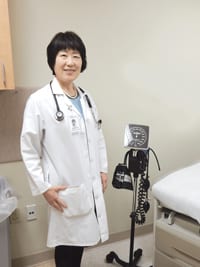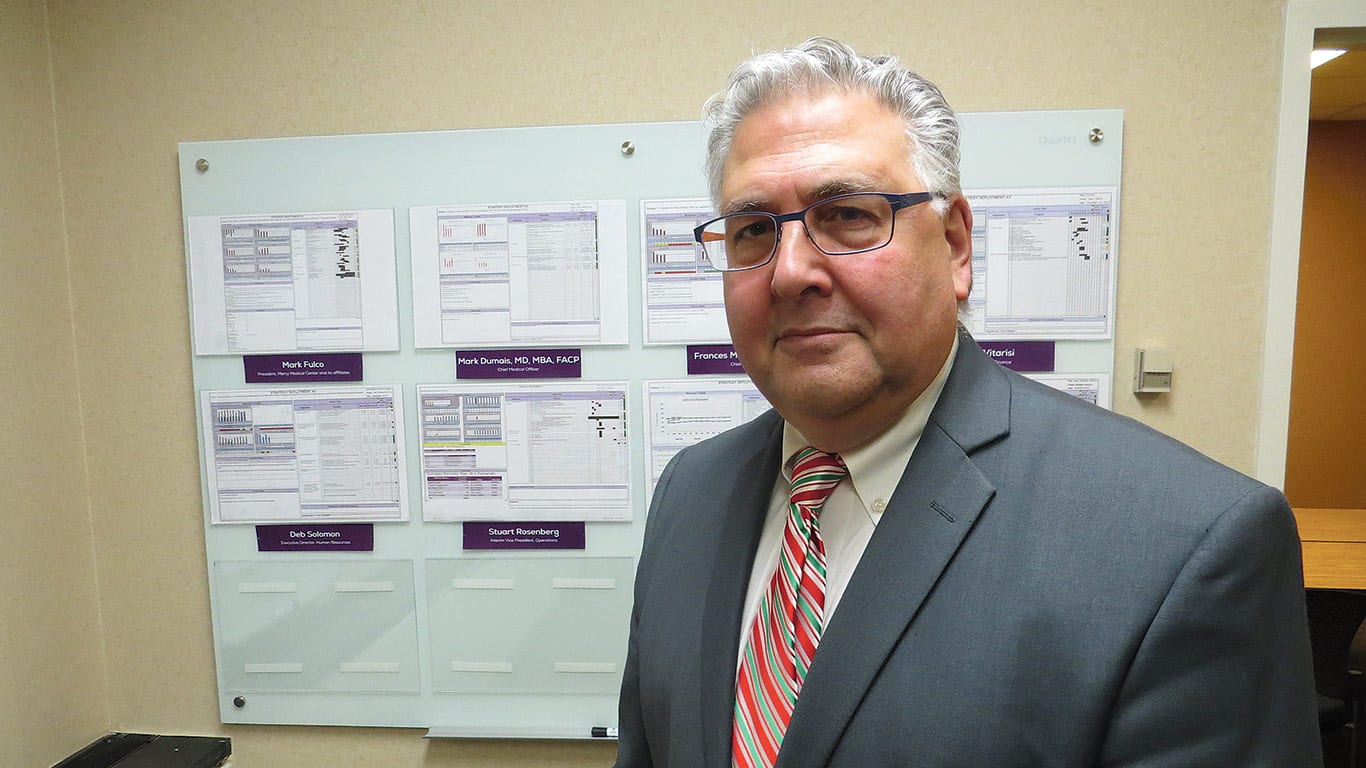Taking Matters to Heart – A Healthy Lifestyle Reduces the Risk of Cardiovascular Disease
The statistics are chilling: Not only is cardiovascular disease the number-one killer of women in this country, every 80 seconds a woman dies from the disease or from a stroke.
Roughly 40 million women across the nation are affected, and although 90{06cf2b9696b159f874511d23dbc893eb1ac83014175ed30550cfff22781411e5} have more than one of the major risk factors — which include high blood pressure, elevated serum cholesterol, smoking, obesity, diabetes, physical inactivity, and family history — up to 80{06cf2b9696b159f874511d23dbc893eb1ac83014175ed30550cfff22781411e5} of heart disease is preventable.
Much has been done in recent years to raise awareness, including the American Heart Association’s Go Red for Women initiative, but Dr. Yufeng Zhang says that, although about 50{06cf2b9696b159f874511d23dbc893eb1ac83014175ed30550cfff22781411e5} of Caucasian women know the risks for heart disease, only one-third of Hispanic and African-American women are armed with such knowledge. In addition, the incidence of diabetes is higher in Hispanic females, which raises their risk for cardiovascular disease or an event.
“Women have fewer heart attacks than men, but their mortality rate is higher,” said Zhang, a cardiologist from Pioneer Valley Cardiology in Springfield.
She added that age also increases risk, because younger women get some protection from estrogen, which declines after menopause.
But that doesn’t mean they’re immune. “We see 30-year-olds in our office with heart disease,” she said.
Most studies on cardiovascular disease have been conducted on men, and the symptoms that occur when a woman is having a heart attack can be very different from what men experience.
For example, sudden exhaustion with no known cause and shortness of breath are signs that a woman should go to the hospital. So is acute indigestion and sweating or shortness of breath with no other cause.
“If you have chest pain with acute stomach discomfort, it’s important to seek immediate medical care,” said family nurse practitioner Kristin O’Connor of Western Mass Physician Associates in Holyoke. “Women’s symptoms are often more vague than the ones men experience.”
Other, more-well-known indicators include chest pain that doesn’t disappear after 15 minutes, arm numbness or tingling, and jaw and back pain. But women often ignore what they are feeling and hope their discomfort will go away.
“So many women come here a few days after damage to their heart has been done, so don’t wait to go the hospital: be vigilant about unusual symptoms,” Zhang said, explaining that she recently saw an older woman whose only complaint was exhaustion when she was having a heart attack.
Stress is also a risk factor and can change the body’s hormone levels. “The heart can temporarily give up if a person is under a lot of stress,” she added.
Preventive measures are important, and O’Connor says women should do all they can to mitigate them.
“Although you can’t modify your family history, you can change excessive alcohol intake, your diet, your weight, and your stress level,” she said, adding it’s also important to know one’s family history. “You can also stop smoking and increase your activity if you lead a sedentary lifestyle.”
Other risks include co-morbid conditions such as kidney disease, hypertension, and metabolic syndrome, which is a cluster of conditions that raise the chances of having heart disease. Many of the factors don’t have symptoms until damage has been done, but, according to the National Institute for Health, if women have three or more of the following criteria, they are at risk for the syndrome:
• A waist measurement of 35 inches or more or abdominal obesity. Excess fat in the stomach area puts women at greater risk for heart disease than excess fat in other parts of the body, such as the hips;
• A high triglyceride level or taking medicine to treat it;
• A low level of HDL or ‘good’ cholesterol, or taking medication to increase it, which also helps remove cholesterol from the arteries;
• High blood pressure or taking medicine to treat it. If pressure rises and stays high over time, it can damage the heart and lead to plaque buildup; and
• High fasting blood sugar, which may be an early sign of diabetes, or taking medicine to treat it.
“But metabolic syndrome is not a disease, so lifestyle modifications can change it,” O’Connor said.
She added that women need to engage in 30 minutes of exercise three to five times a week and increase the amount as their stamina and endurance build.

“You don’t need to run; you can walk, but you do need to increase your activity above and beyond what you do in a normal day,” she told HCN.
For example, although some might assume that a woman who works as a waitress and is on her feet all day is getting her fair share of exercise, O’Connor says it’s not enough because the body adjusts to whatever a person does on a daily basis.
Knowledge Is Key
Managing heart disease is important, and women need to keep track of their cholesterol levels. HDL should be high, and LDL should be low, but even if those numbers fall within a normal range, a high triglyceride level puts women at risk for a cardiac event.
Triglycerides— fats from the food we eat that are carried in the bloodstream — are especially significant in women. In fact, an increase of only 88 points raises the risk that a woman will develop heart disease by 37{06cf2b9696b159f874511d23dbc893eb1ac83014175ed30550cfff22781411e5}, while it increases the risk for men by only 14{06cf2b9696b159f874511d23dbc893eb1ac83014175ed30550cfff22781411e5}. In the past, their importance was overshadowed by a focus on cholesterol, but research has shown that triglyceride levels over 150 mg/dL can increase the risk of heart disease, especially if HDL or ‘good’ cholesterol is less than 40 mg/dL.
Cardiovascular disease includes coronary artery disease, which occurs when there is a blockage in a heart vessel caused by high cholesterol, which allows plaque to build up.
But drugs called statins, which reduce cholesterol and stabilize plaque, can make a difference. Stents can be put into vessels that are blocked to enlarge them, but Zhang warns that people can develop new blockages if they don’t alter their diets and lifestyles.
Guidelines say a woman’s body-mass index (BMI) should not be more than 25, but Zhang said that number may be too high for some groups, such as Asian women.
O’Connor concurs, and says looking fit or being thin does not necessarily equate to heart health.
“It’s not just about the numbers on the scale; a woman may have a normal BMI or weigh 100 pounds, but still smoke like a chimney or drink too much,” she said, noting that it’s important for women to get screening tests during annual visits with their physicians. She added that some women are “skinny fat” — their bodies are thin, but they have clogged arteries from plaque that cannot be seen.
Indeed, what women choose to eat does make a decided difference. Zhang noted that, although many women with heart disease tell her they don’t eat much fat or red meat, new studies show carbohydrates and sugars are the biggest dietary culprit and can significantly increase the risk of dying from cardiovascular disease.
The Journal of the American Medical Association reports that, if 17{06cf2b9696b159f874511d23dbc893eb1ac83014175ed30550cfff22781411e5} to 21{06cf2b9696b159f874511d23dbc893eb1ac83014175ed30550cfff22781411e5} of the calories a person consumes each day come from sugar that does not occur naturally in foods such as fruit or milk, the risk of dying from coronary vascular disease rises by 38{06cf2b9696b159f874511d23dbc893eb1ac83014175ed30550cfff22781411e5}.
“Sugar causes inflammation in cells, weight gain, and is linked to an increase in LDL or bad cholesterol, as well as triglycerides,” O’Connor said.
The World Health Organization advises limiting sugar intake to five teaspoons a day, but since the average adult in the U.S. consumes about 22 teaspoons a day, which is hidden in processed foods and beverages, it’s not an easy change to make.
“But sugar increases blood pressure, weight, and cholesterol, which all raise the risk of heart disease,” warned registered dietician and nutritionist Nancy Dell of Nancy Dell & Associates Nutrition Counseling, adding that it also causes aging and wrinkling of the skin.
Although it’s difficult to give up sugar cold turkey, Dell said it can be done by gradually retraining the taste buds. For example, she told a woman who loves cola to begin adding a small amount of lemon-flavored seltzer to each glass, then slowly increase the amount of seltzer in the beverage over time.
However, consuming too much dietary fat is still problematic, and it’s found in products women tend to enjoy, such as cheese, cream cheese, and coffee creamers, although black coffee and tea can reduce the risk of heart disease.
Trans fats are the worst offender, and a Harvard study found that women in the U.S. with the highest levels of trans fats in their blood had three times the risk of coronary heart disease as those with the lowest levels. And although the U.S. Food and Drug Administration has mandated that companies stop using trans fats in food products, the agency is allowing it to be phased out over time. As a result, Dell said it still appears in many products, so it’s important to read labels.
“You are what you eat, and if you eat foods that are unhealthy, you will become unhealthy,” she said. “The food you consume becomes part of your body.”
Cautious Approach
Zhang said women have more risk factors than men for cardiovascular disease, so they need to make it a point to care for themselves.
Gender differences that men don’t face include radiation for breast cancer and pregnancy-related hypertension and gestational diabetes, which raise the likelihood that a woman could have a heart attack or heart disease; even though two of these conditions occur during pregnancy, the risk factor doesn’t disappear after a woman has given birth.
Ultimately, prevention is key, and O’Connor recommends that women start blood screenings at age 20 to measure inflammatory markers and their cholesterol.
“Even if the results are normal, the screenings should be repeated every two to three years for the rest of their lives,” she said.
All these factors play a role in maintaining a healthy heart.
“Most heart disease is preventable,” Zhang said, “and if it does occur, it is treatable if women take care of themselves, eat a healthy diet, exercise, see their doctors on a regular basis, and take the medications prescribed for them.”



Comments are closed.